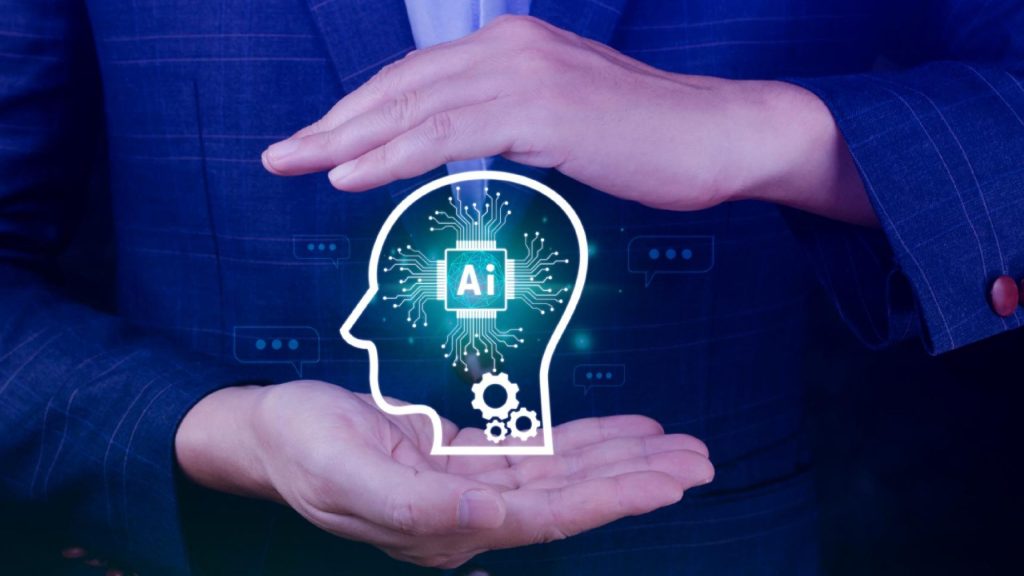AI will replace 25% of U.S. lawyers by 2028, marking a major change in the legal profession. This change shows just one way AI is changing our world faster than ever. AI has already become part of our everyday lives through virtual assistants like Alexa, self-driving cars, and advanced medical diagnosis tools.
The future of AI looks promising. Students will learn through individual-specific experiences by 2028, while healthcare systems will substantially improve their diagnosis accuracy with AI tools. AI careers are growing in all sectors, with entry-level positions offering annual salaries between INR 6-10 lakhs. The European Union’s upcoming complete AI regulations mark a significant phase in AI’s development.
This piece will look at expert predictions for AI through 2025 and how it will affect different industries with technologies that are changing our future.
Current State of AI Development in 2024
The AI market shows impressive growth in 2024, reaching a value of USD 196.63 billion in 2023. Software solutions make up 35.8% of global revenue, while deep learning technologies dominate the market share.
Global AI Market Size: $387.45 Billion
North America leads the pack with 30.9% of global AI market revenue. The United States AI market hit USD 42.00 billion in 2023 and stands at the forefront of AI innovation. Europe’s market looks set for major expansion with a CAGR of 33.2% from 2024 to 2030, so its position in the global AI world continues to strengthen.
The Asia Pacific region claims 25.6% of global revenue and shows strong signs of future expansion. The advertising and media segment has emerged as the revenue leader, showing AI’s growing influence in a variety of sectors.
Key AI Technologies Driving Growth
Several vital components shape the technological landscape that drives AI forward:
- Deep Learning: Dominates market share as text recognition and content analysis applications grow
- Machine Learning: Shows promise through big model creation and quantum computing integration
- Natural Language Processing: Powers advanced conversational agents and better customer interaction
Operations currently holds the biggest market revenue share. AI companies report big revenue jumps thanks to steady investment in AI research. AI companies’ enterprise value has reached USD 9.00 trillion, that indicates strong market confidence.
Big data technologies help speed up market growth. Companies see real benefits – 42% report lower costs after implementing AI, while 59% see higher revenue. The number of newly funded AI companies jumped 40.6% from last year, showing investors believe strongly in AI’s future.
Expert Predictions for AI Capabilities by 2025
Experts in the field predict revolutionary advances in AI capabilities by 2025. These developments will transform multiple domains and reshape AI’s future.
Natural Language Processing Breakthroughs
NLP is pioneering AI’s state-of-the-art developments, and experts expect major breakthroughs soon. Live translation capabilities will break down language barriers. Users will convert speech and text between languages instantly with near-human accuracy. The technology will detect subtle emotions, sarcasm, and hidden intentions in text conversations.
Key NLP capabilities expected by 2025 include:
- Text Generation: Advanced models that create human-like content with exceptional coherence
- Question Answering: Systems that give detailed answers to complex queries
- Summarization: AI that can condense long documents while keeping essential information
Computer Vision Advancements
Computer vision technology’s rise continues, with the global market reaching USD 19.83 billion in 2024. Experts project a yearly growth rate of 19.8%. Edge computing has become a key trend that enables live processing directly on devices. This reduces latency and speeds up decision-making.
Object detection and tracking algorithms will become more accurate and faster. These improvements will boost autonomous driving, surveillance systems, and advanced robotics. The automotive industry’s computer vision market should hit USD 55.67 billion by 2026.
Quantum AI Integration Timeline
Quantum computing and AI are joining forces to create unprecedented opportunities. Quantum AI will solve one of AI’s biggest problems: limited physical computing power. Hybrid quantum-AI systems will change optimization, drug discovery, and climate modeling.
The industry expects new quantum platforms that smoothly combine classical, AI, and quantum resources. These advances will make quantum computing more practical and transform computation-heavy industries. The timeline for widespread quantum AI adoption remains complex because quantum computing is still experimental.
Industry-Specific AI Implementation Forecasts
AI implementation continues to grow rapidly across major industries. Market indicators suggest unprecedented growth through 2025.
Healthcare: 45% Annual Growth Rate
The AI healthcare market will expand to USD 17,198.9 million by 2025. The sector expects a strong CAGR of 18.2% over the next decade. AI systems now analyze health data through wearable devices and provide virtual consultations and drug formulation services.
Healthcare providers can monitor patients’ cardiac activity and blood sugar levels live through smart implants and wearable devices from any location. AI decision-making tools will become mainstream by 2025. These tools give doctors quick access to evidence-based research and treatment guidelines. AI automation improves clinical workflows and boosts efficiency at patient and system levels.
Manufacturing: $16.7B Market Value
The manufacturing sector has embraced AI rapidly. The market size will reach USD 5.82 billion in 2025. Key manufacturing applications include:
- Predictive maintenance with 25% market share in 2024
- Quality control through machine learning frameworks
- Industrial robotics with advanced automation
The U.S. manufacturing sector leads North America with 75% market share. IoT devices play a vital role in this growth. Projections show 198.7 million IoT devices in manufacturing by 2030.
Financial Services AI Adoption
Financial institutions are moving quickly to adopt AI. 92% of companies plan to increase their AI investments over the next three years. The sector expects AI to create value between USD 200 billion to USD 340 billion annually.
McKinsey’s largest longitudinal study reveals AI could add USD 4.40 trillion in productivity growth from corporate use cases. Financial organizations focus on using AI to manage risk, improve customer experience, and optimize operations. AI co-pilots work with employees to simplify processes. Some institutions expect up to 20% efficiency gains through AI automation.
Emerging AI Technologies Shaping 2025
Edge computing and neuromorphic systems signal radical alterations in artificial intelligence’s future scope. These emerging technologies are changing how AI processes information and interacts with the physical world.
Edge AI Computing
Edge computing is revolutionizing data processing methods. Gartner predicts 75% of enterprise-managed data will move outside traditional data centers by 2025. This change boosts up-to-the-minute data analysis and streamlines processes in manufacturing, retail, and smart city applications.
Edge AI shows impressive capabilities:
- Autonomous defect detection and workflow optimization
- Up-to-the-minute traffic management and emergency response
- Automated inventory control with adaptive scaling
IDC projects that 60% of Global 2000 companies will double their edge computing resources by 2028. We expanded this to address the rising needs of generative AI inferencing workloads.
Neuromorphic Hardware Development
Neuromorphic computing brings revolutionary approaches to processing efficiency. This technology stands out in data processing applications and offers major advantages when handling complex patterns and delivering instant insights. The architecture supports defense systems, autonomous vehicles, and artificial intelligence applications effectively.
The automotive industry leads in adopting neuromorphic computing, along with increased use of advanced driver-assistance systems. Hardware dominates the market share through specialized neuromorphic chips and memristor-based systems.
AI-Human Brain Interfaces
Brain-computer interfaces (BCIs) represent a breakthrough in human-AI interaction. These systems have made remarkable progress in helping people with neurological conditions regain their communication and motor functions. The Utah array’s 100 electrodes have led to many breakthroughs in direct neural communication.
UCSD researchers created a significant advance with a BCI containing over 4,000 channels. Their flexible backing adapts to the brain’s surface. Scientists can now decode brain activity through wave patterns instead of local electrical potentials.
AI integration with BCIs boosts signal processing capabilities and improves neural decoding speed and accuracy. These systems excel at tasks that need instant processing and adaptive learning. This creates new possibilities for rehabilitation medicine and neural communication.
These emerging technologies expand artificial intelligence’s potential and create unprecedented opportunities for human-machine interaction and computational efficiency. These innovations fundamentally change our approach to information processing and AI system interaction, unlike traditional computing methods.
Global AI Development Initiatives
Major economies shape the future of artificial intelligence through regulatory frameworks. Governments have created detailed strategies to guide AI development.
US National AI Research Strategy
The United States continues its strategic approach with nine key priorities in the National AI Research and Development Strategic Plan. These priorities focus on:
- Long-term investments in responsible AI research
- The quickest way to enable human-AI collaboration
- Ethical and legal implications
- Safety and security protocols
- Development of shared public datasets
- Standards creation
- Workforce development
- Public-private partnerships expansion
- International research collaboration
Federal investments target solutions that private sectors can’t address on their own. The strategy creates AI systems that enhance human capabilities and promotes innovation while protecting public interests.
EU AI Act Implementation
The EU’s AI Act will take effect on August 1, 2024. It stands as the world’s first detailed AI regulatory framework. The implementation follows a clear timeline, and the first prohibitions will start in February 2025. The act goes beyond the basic framework by introducing hefty penalties. Non-compliance can result in fines up to €35 million or 7% of global turnover.
The implementation moves forward in stages:
- February 2025: AI literacy requirements and prohibited practices enforcement
- May 2025: Codes of practice for general-purpose AI
- August 2025: Obligations for AI providers
The European Commission works on technical standards and conformity assessments. The framework groups AI systems by risk levels to create a balance between innovation and safety.
China’s AI 2025 Plan Progress
China shows remarkable progress in its AI strategy. Private investment in generative AI jumped from USD 650 million in 2023 to USD 3.15 billion in 2024. The country has over 4,500 AI companies, which makes up 15% of the global total.
China’s AI development rests on four core principles:
- Technology-led breakthroughs
- Systematic resource concentration
- Market-driven commercialization
- Open-source collaboration
China’s AI ecosystem has government research centers, tech giants, and emerging startups. In fact, major players like Baidu’s ERNIE Bot hold 11.5% market share in domestic GenAI products. The country shows its dedication to AI governance through regulatory measures, including the 2023 Interim Measures for Generative AI Services.
Open data policies and public data reform pilots strengthen China’s position. The country leads the Nature Index 2024 of scientific contributions worldwide. This advancement supports China’s goal to become the global AI leader by 2030, with yearly economic contributions potentially reaching USD 600 billion.
Conclusion
AI is revolutionizing global industries and will continue to do so through 2025 and beyond. The technology’s rapid adoption has pushed the market value to USD 196.63 billion, showing its profound effect across sectors.
Healthcare leads this revolution with a 45% annual growth rate. Manufacturing companies now utilize AI for predictive maintenance and quality control. The financial sector expects AI to create value between USD 200-340 billion annually, which proves its economic potential.
Edge computing and neuromorphic systems mark the next technological frontier. Enterprise data processing at the edge will reach 75% by 2025. Breakthroughs in natural language processing and computer vision continue to expand AI’s capabilities in different industries.
The world’s major economies have created detailed frameworks to guide responsible AI development. The European Union’s AI Act, China’s strategic initiatives, and the US National AI Research Strategy balance innovation with regulation.
AI’s development through 2025 opens unprecedented opportunities for businesses and society. Advanced technologies, regulatory frameworks, and industry adoption propel development toward a future where AI optimizes everything in our lives.

